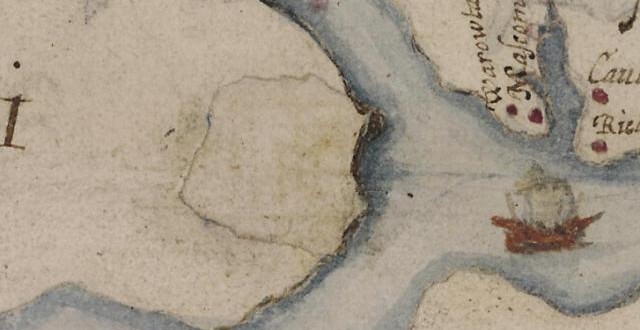North Carolina researchers hopeful that site is that of Lost Colony.
The mystery of the Lost Colony of Roanoke has led to many theories over the years, but no final determination of what happened to 120 English settlers who seem to have just vanished.
In the late 1500s, the first group of English settlers on Roanoke Island gave up and went back to England after running out of food and being attacked by Indians.
In 1587, a second colony was founded on Roanoke. John White, the leader of the colony, went to England to get more supplies. When he returned in 1590, the settlement was deserted with no sign of the 90 men, 17 women and 11 children who had lived there. The only clue found was the word “Croatoan,” the name of a friendly local Native American tribe, carved into a tree.
Most researchers in the past have believed that the colony was lost to either disease or violence, but there is little evidence to back up either theory.
In 2012, researchers from the First Colony Foundation and the British Museum announced they had found a tantalizing clue about the fate of the Lost Colony in a long-forgotten map.
Tests on a map drawn by White have found the possible location of what may have been the intended capital of the colony near Roanoke Island, apparently drawn in invisible ink. There is a hidden symbol indicating a fort that is about 50 miles inland.
The inked symbol, which is also hidden by a piece of paper glued over it, was likely drawn with a mix of milk and citrus juice or urine, commonly used for invisible writing during the era.
North Carolina Miscellany, a blog by the North Carolina Collection at the University of North Carolina at Chapel Hill, reported that information presented in 2012 indicated that before White left his fellow colonists in 1587, the settlers had already discussed moving about 50 miles inland.
The clue on the map and that information led First Colony Foundation researchers back to a site where they had found artifacts years ago.
Researcher say more recent digs have uncovered more artifacts that appear to be of the correct time period, increasing hope that the centuries-old mystery of the Lost Colony may soon be solved.
Agencies/Canadajournal
 Canada Journal – News of the World Articles and videos to bring you the biggest Canadian news stories from across the country every day
Canada Journal – News of the World Articles and videos to bring you the biggest Canadian news stories from across the country every day



